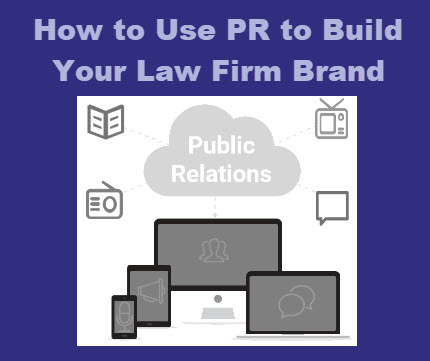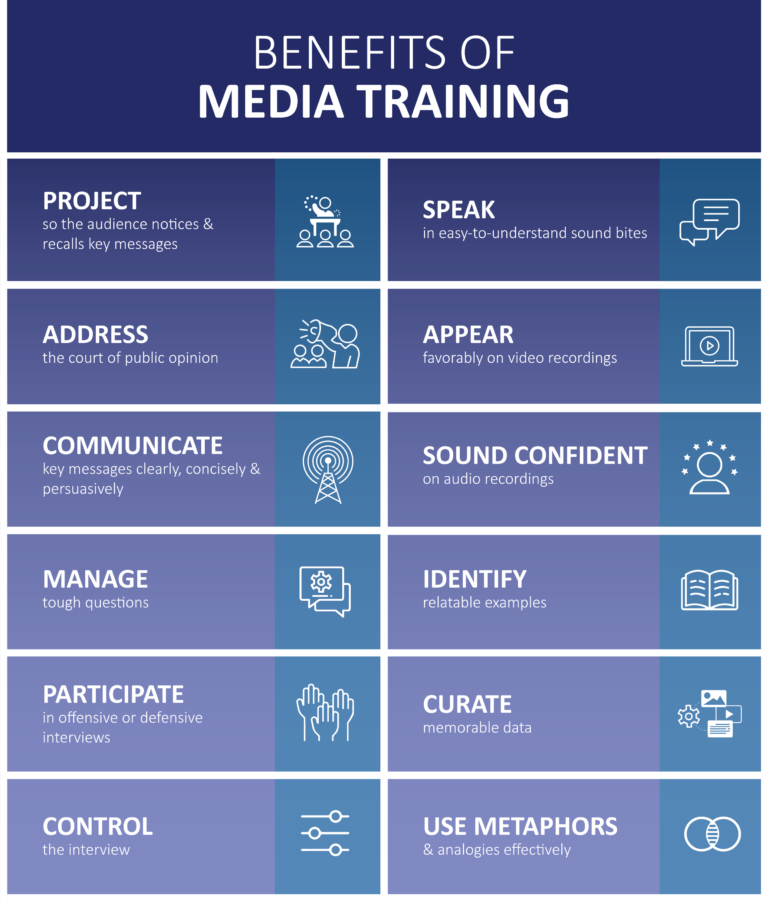How to Use PR Today to Build Your Law Firm Brand
During this year’s Clio Cloud Conference (#ClioCon), Gina F. Rubel, Esq., Founder and CEO of Furia Rubel Communications, and Erin Levine, Esq., Founder & CEO of Hello Divorce talked about how to use PR today to build your law firm brand. This panel was moderated by Pamela Smith, Manager of Corporate Communications at Clio.
ClioCon is a conference that attracts thousands of leaders from across the legal and technology industries and aims to facilitate networking and education across the legal technology sector. Q&As from the discussion follow.
What are ways to get your knowledge, messages, and experiences into the world?
Gina Rubel: Many law firms have self-serving websites, “I did this, I went to this school.” But when you are identifying what you do for an audience, and they’re seeing it through the public eye or through thought leadership, that validates what you bring to the table no matter what kind of law you practice. When someone searches for you, they’re searching based on their needs. They don’t care about whether you practice in federal or state courts, they want to know, “Can you solve my problems?” Law is a needs-based industry. People need your services when they need them. It helps to validate what you do through advertising what you can offer a consumer and proof of what you have done for consumers.
What’s your approach to going to media and what kind of stories or topics do you deem media-worthy?
Gina Rubel: As a legal marketing agency, we do more storytelling for our clients as opposed to ourselves. The first thing to ask is, “Who does this story matter to? Who is the audience?” Until you know that, you can’t decide the best outlet for that story.
For example, we had a client who worked on a celebrity criminal case. We got that client onto Good Morning America with Gloria Allred because it was national and international news. It needed a national platform. Whereas if you’re practicing family law and you’re county or regional-based, that’s probably not your best outlet. You’d want to be looking at your local publications, and if you’re legal tech, you should be looking for reporters such as Bob Ambrogi.
Erin Levine: I suggest pitching a story about you or a story about your company only two to three times a year. It can be tricky to get a story picked up without having relationships built with journalists. I wait until I have news,

maybe a new product update, or something that’s special. I then research which journalists might be most interested in my story. If you send out pitches to a hundred different journalists, you’re not going to hear from any of them. Many journalists are young and busy, so the story has to be something that captivates them. That’s the large-scale strategy however you don’t need one of those stories quarterly to keep building your brand.
On a smaller scale, I often focus on ways to get quoted in articles or journals. I source those opportunities from “Help a Reporter Out” or (HARO) and Qwoted. If you sign up for HARO, they will send you opportunities that fit your criteria, skim these to see if there’s anything in your industry to which you could speak. Both are great ways to not have to pitch, rather, the journalists come to your inbox.
Gina Rubel: It’s important, if you use those platforms, to respond right away. Don’t wait two days. You must do it quickly and don’t do it when you’re on trial. You need to be responsive when the journalists reach out to you.
Erin Levine: I’ve had a virtual assistant or a paralegal to scan websites and emails every couple of days. I’m in family law, so they will look for divorce, breakup advice, and celebrity divorce. We can do what is called “newsjacking,” which means speaking to an event in your industry that is being covered in the media.
What do you think is a good cadence to go out to the media or to put something out? What is a good touchpoint for legal professionals?
Gina Rubel: It’s dependent on whether you’re doing it for yourself or a firm. At Furia Rubel, we work with Am Law firms, it is likely that we may be reaching out daily as it relates to different practice groups, industries, or countries.
What is most important is to develop relationships with reporters that cover your specialty and who reach your target audience.
Take the time to reach out and introduce yourself to reporters on LinkedIn or Twitter. Twenty-seven percent of verified Twitter users are members of the media. Journalists are looking at what you say, whom you know, and what you share. I’ve interviewed many reporters over the years, frequently on our podcast, On Record PR, and they say the same thing, they are looking to validate you before they follow up.
Erin Levine: If reaching out seems frustrating or you don’t have the time for it, I can’t tell you how many times simply posting on Twitter or LinkedIn has led to journalists reaching out to me. If there’s a particular hashtag you can use, and you can speak on it regularly, that could be helpful.
Gina Rubel: Additionally, If you’re writing a blog on something that’s happening in the news right now, and it’s well-optimized, members of the media will reach out because they read it and wanted to do a follow-up story.
What are risks to PR for lawyers?
Erin Levine: There are obvious things like being careful with attorney-client privilege, but things like legal advice versus legal information are less obvious. You might be interviewed by a journalist, or it might be on a podcast, and they want to know hypotheticals, you can share as much legal information as you want, but the moment that you start applying the law to a particular set of facts or a specific person, then you’re bordering on unauthorized practice of law.
Eventually, you may interact with hostile journalists. The Daily Journal reached out to me, and they were hostile to my position, my quote was then misquoted and mischaracterized. What I’ve been doing since then is asking if I could approve the quote in writing before it’s published and doing research on the journalist in question. If it seems like something you need to research or you’re going to need training, then reach out to a PR agency as it can get bad fast.
Gina Rubel: Attorneys need to understand how the media plays. I’m not just referring to reporters, but social media as well. Make sure you are telling your clients what not to do and what not to say. I’ve seen cases go awry because there was a confidential settlement and the client started bragging on Facebook or speaking to the media when they shouldn’t have.
Don’t ever say “no comment.” It puts you in a bad light and makes it look like you’re hiding.
Client confidentiality is important and informs what you can and cannot say. If you’re talking about particular matters, get client approval.
What is an alternative to saying, “no comment”?
Gina Rubel: Simply, “While the matter is in litigation, we are going to try the case in the court of law.” No one can say, “You said, ‘No comment.’”
You might want to say something of substance when you need to get out of in front of the matter, which is different.
Another risk the use of pause. Many reporters will pause and wait for you to say more. In cross-examination in the courtroom, we remain quiet, and the witness on the stand will say exactly what their lawyer didn’t want them to say. The same thing happens in media interviews. You need to be smart, prepared, and quiet when you should be quiet.
How do you measure that PR is having an impact on your law firm? How do you know PR is working?
Erin Levine: Only pitch two to three or four times a year on big stories. If I’m able to grab a journalist’s attention I always do two things: I keep in mind three points that I want to express, and I make sure to mention them at the start, in the middle, and before the interview is over. Also, I ask journalists ahead of time for bullet points or questions so that I can have a better sense of their angles and interests. You can avoid getting distracted or overwhelmed by doing this.
Always be clear about what your specific goal is when contacting a journalist or media platform.
If it’s a legal publication and you want to be known as an expert in a particular area of law, etc.
It’s also important to understand who your audience is.

How are you measuring law firm growth and impact specifically?
Erin Levine: It’s hard to measure impact with PR sometimes, but with paid marketing, you can see exactly what’s happening. One thing that you can absolutely do is ask your clients where and how they found you. Maybe it’s asking them directly when they’re filling out their intake form or when they’re talking to an intake staff. Oftentimes people will say we saw you or your company in a specific publication.
Gina Rubel: At Furia Rubel, we have methods to specifically measure impact and business development. I’m not one to advocate for fancy expensive tools for small firms because they are not realistic. Use Google Analytics and look at where the traffic is coming from. If your website is tied to your CRM, like Clio Grow, they can speak to each other. Our newsletters usually talk about our PR coverage, so potential clients will go to the PR coverage and then come back to the newsletter which we can see through our CRM.
Another way to measure impact is by perfecting how you do your intake. Simply by asking, “How did you hear about us?” you can learn so much.
As mentioned earlier, legal is needs-based, you have to be top of mind. I’m in local Facebook groups and often times someone will post “I’m looking for a divorce attorney,” or “my friend is looking for a divorce attorney,” or “this incident happened to me, does anybody know a worker’s comp lawyer?”
If you’re not front of mind for people, they don’t remember you. Facebook is a powerful tool, and you need to be careful. You should be using your law firm’s Facebook not your personal one to interact with potential clients.
All social media posts are measurable. You can post an article on LinkedIn, and it can tell you the number of people who have interacted with it and who went to your website as a result. These tools can help you to measure your return on investment.
Erin Levine: What I find gets picked up most is when I do a poll on social media and if I get 100 or 200 people to respond about a particular thing, I can pitch that to a journalist rather than a complex story. Super complex rules around child custody are not so interesting, whether or not your dog will end up with you or your ex during a split, is interesting. Be informed by the headlines, and what you’re seeing out there. We often want to talk about things that are important to us in our community, but sometimes it’s much easier to do something that impacts something that’s important to the public.
What is one thing lawyers new to PR can do now?
Erin Levine: Update your social profiles. Decide which ones you want to focus on because you don’t have to do them all and sign up for something like HARO.
Start getting quoted and build those relationships with the journalists you’ve spoken to, even if it’s just by email or text. One small quote that was in a local publication can turn into an article in Fortune down the road when that journalist gets picked up there.
Gina Rubel: Update your LinkedIn profile. The body copy shouldn’t read as a resume and your profile section should talk about what’s in it for the client; the benefits you bring, and what sets you apart from others. Write the body copy in the first person, unlike your website biographies which are typically in the third person. Do this before signing up to get media trained. Most lawyers think they’re great at talking to the media and, I can tell you as a third-generation attorney and one who thought the same way, I am so glad there was no such thing as social media when I had my first television interview.
Where could lawyers get media training?
Gina Rubel: Look for a media trainer who understands the idiosyncrasies of being a lawyer and the ethics rules. Media training is one of the services we offer at Furia Rubel.
Erin Levine: Many lawyers will do tabletops. If you’re thinking, “I’ve got this great opportunity, I don’t want to mess it up,” you’re going to call someone like Gina to run through this with you. Getting your answers out in a low-stakes environment is a great way to rock the media interview when it happens.
How do you prepare for inbound requests from the media?
Gina Rubel: Ask, who it is and what they are looking for. Find out what their deadline is. Prioritize based on the information you gather. There is media strategy that goes into whom you’re going to talk to and when, which is a big part of the planning process.
Have your key messages ready in advance and write them based on the best-case scenario, the worst-case scenario, and somewhere in the middle. Most of the time you’re not going to have fifty reporters calling in. but when that does happen, you will need a team. The best advice I can provide is to make sure whoever answers your phone is given specific instructions on what they can and cannot say, and what is the specific information they need to obtain? I’ve seen receptionists say, “we have no comment,” which becomes the headline the next day.
Erin Levine: If it looks like it could be interesting or timely, I’ll have intake research the reporter and the publication before I respond. If you have a high-profile matter, that’s a good time to consider hiring PR support.
Gina Rubel: Bottom line: talk to the law firm’s public relations team. If it’s high profile, we’re also the scapegoat. We will oftentimes protect our clients from the media and make sure that it’s managed in an orchestrated manner.

